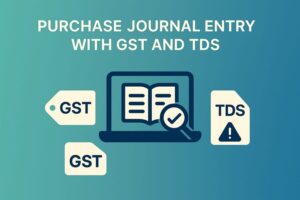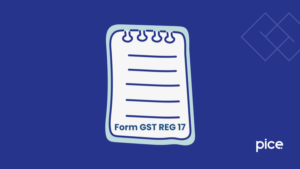How to Write a Letter to Vendor for GST Mismatch – Sample?
- 4 Jul 25
- 11 mins

How to Write a Letter to Vendor for GST Mismatch – Sample?
- (1) Mismatch in GST Return: Types of possible mismatches
- (2) Mismatch in GST Return: GSTR 1 and GSTR 3B (for turnover and output tax)
- Reasons for mismatch in GST return:
- (3) Mismatch in GSTR 2A and GSTR 3B (for ITC)
- (4) Relieving taxpayers for non-reflected invoices in the 2A
- (5) Sending of notice and initiation of further proceedings
- Sample Letter Regarding GST Mismatch
Key Takeaways
- GST return mismatches can arise due to clerical errors, incorrect data entries, or delays in invoice reporting.
- Common mismatches include ITC discrepancies, turnover mismatches, and GSTR-1 vs GSTR-3B differences.
- Writing a formal letter to the vendor helps initiate resolution for GST mismatches effectively.
- Prompt action and clear communication can prevent penalties under GST scrutiny and compliance audits.
- Using a predefined GST mismatch letter format saves time and ensures professional, accurate correspondence.
Filing GST requires a lot of corresponding data, which makes it a bit complicated for taxpayers. Besides remembering the day of filing, they need to follow a proper compliance procedure that includes invoices and adequate documentation. Filing returns with procedural errors often leads to legal actions taken against the taxpayer.
Sometimes, no matter how carefully you file your GST return, it leads to mismatch, causing discrepancies or even evasion of payment of tax. But there is a way out. You can write a letter to vendor for GST mismatch stating the type of mismatch that has happened and ask the vendor to take the required action to resolve the mismatching issue.
Read this blog to get an idea of possible mismatches in GST returns. In addition, get a GST mismatch letter format and learn how to write a letter if a GST filing mismatch occurs.
(1) Mismatch in GST Return: Types of possible mismatches
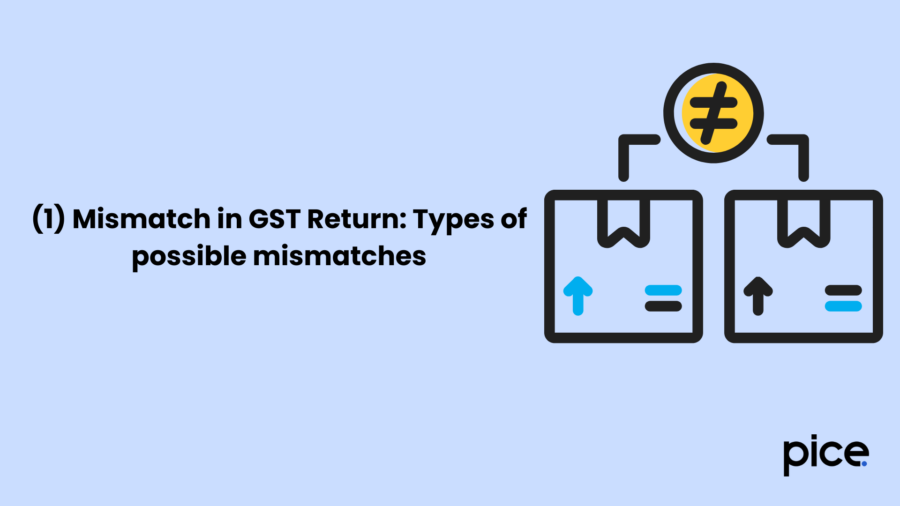
GST returns play a crucial role in calculating a taxpayer's tax liability. At regular intervals, taxpayers are responsible for paying the "returns" as a statement of information to the tax administrators. They can opt for monthly or quarterly filings. The statement contains details of turnover amount, sales price exemptions, and deductions.
Here are the types of possible mismatches that can occur while GST returns filing:
ITC (Input Tax Credit) Mismatch
It occurs when a discrepancy occurs due to misalignment between the ITC amount claimed by a taxpayer in the GSTR 3B form and the ITC amount calculated automatically in the GSTR-2A form.
Turnover Mismatch
This type of mismatch happens when there is a difference in amounts mentioned in GSTR-1 and GSTR-3B. To handle such a mismatch, send a formal letter to vendor for GST mismatch and ask for an actionable solution.
Late Filing Interest Mismatch
The date to file GST returns is usually the 20th of every month. If a taxpayer is late filing his GST returns through GSTR-3B, a late filing charge is payable. In that case, along with the outstanding tax amount, an interest of 18% per annum is levied. A mismatch occurs while calculating the interest amount.
GSTR- 2A Mismatch
A taxpayer's GSTR-2A file shows only the inward supplies levied on the tax rate, not the outward supplies. At this point, the Input Tax Credit on these invoices might get delayed or might not get uploaded in the GSTR- 2A, leading to a mismatch.
Differential Tax Mismatch
It refers to the magnitude of mismatches that occur when discrepancies arise between the tax liability accessed by the GST authorities and the GST returns filed by the taxpayer.
Now, let us discuss these mismatch types in detail, along with the reasons:
(2) Mismatch in GST Return: GSTR 1 and GSTR 3B (for turnover and output tax)
An issue of mismatch between GSTR 1 and GSTR 3B would lead to a turnover mismatch. It is a lighter form of mismatch, such as timing differences or clerical errors.
For example, ABC Private Limited company has a GST registration. To file quarterly GST returns, the reported sale amount mentioned in GSTR A is Rs. 35 Lakhs, but in the GSTR 3B form, the amount is Rs. 25 Lakhs. In this scenario, there is a discrepancy of Rs. 10 Lakhs in the provided information, which could be a typo error.
Similarly, the output GST amount mentioned in GSTR 1 is Rs. 8.05 Lakhs, whereas in GSTR 3B, the amount is 5.05 Lakhs. Again, it shows a discrepancy of Rs. 3 Lakhs, leading to a mismatch. This type of mismatch can take place for several reasons; let us check out what are they:
Reasons for mismatch in GST return:
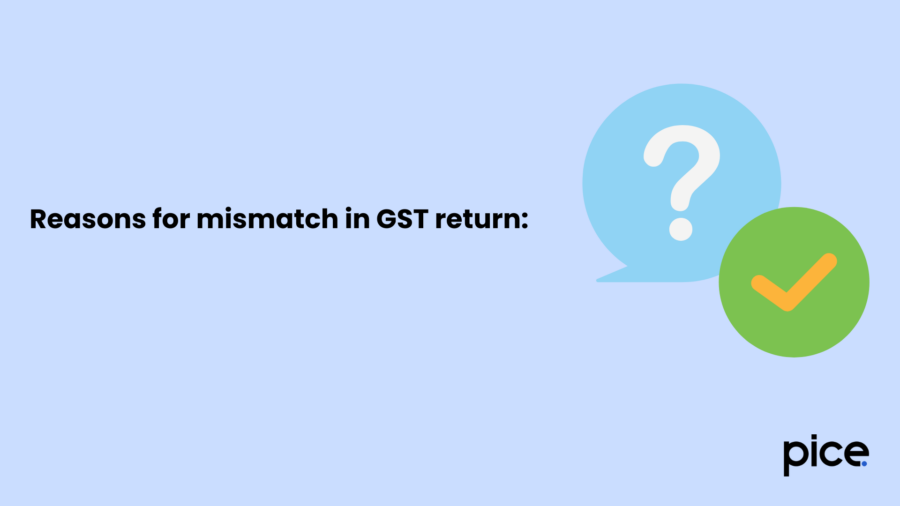
Following are the reasons to consider for mismatch in GST returns:
Undisclosed Transactions
Sometimes, transactions conducted through debit and credit notes are not recorded properly, triggering a mismatch alert. As a result, exempt and non-business supplies are not reported in Form GSTR 1. However, the amount is accounted for in GSTR 3B, causing a mismatch.
Misplacing Supplies within the Reporting Framework
Files GSTR 1 always have a record of table 6A consisting of the names of the zero-rated supplies. This might be missed out on GSTR 3B's Table 3.1 (A), resulting in possibilities for mismatch.
Misattribution of Taxes
Most often, taxpayers become confused about the IGST, CGST, and SGST and unknowingly report the IGST amount instead of CGST or SGST. This could be a reason for the mismatch in turnover reported.
Reversal and Reclaim of ITC
If a taxpayer is not eligible for a claim, an ITC reversal may be possible. However, it was mistakenly not shown in the return filing. Reclaiming ITC after reversal could lead to discrepancies in tax payment.
Technical and Clerical Issues
Issues with the GST software or data entry errors could result in a mismatch.
(3) Mismatch in GSTR 2A and GSTR 3B (for ITC)
Mismatch in GSTR 2A and GSTR 3B is a common mismatch. It could happen because of misinformation during the ITC claim. For example, if ABC company is claiming an ITC payment of Rs. 10,000 for July 2024 while filing returns using the GSTR 3B form.
Somehow, their supplier XYZ mistakenly reports this claim for August instead of July. Since the amount is not visible in ABC's GSTR 2A filing, it could be identified as a mismatch. In this context, immediately writing a letter to the vendor for GST mismatch could be most impactful.
Types of Input credit and how they are entered in the GSTR-3B
Commonly, ITC can only be claimed for business purposes. You cannot use it for personal mismatch in tax liability. The ITC amount you are eligible for is mentioned in the GSTR 2A form. The following section will focus on the 5 types of ITC:
Input Tax Credit Available
It includes details of all capital goods, inward supplies, input purchases, imported goods or services, and reverse charge-liable supplies.
Eligible Input Tax Credit
Eligible ITC is calculated after deducting the ineligible ITC amount and the reversed ITC amount.
Ineligible Input Tax Credit
This refers to ineligible credit on input services and capital goods used for non-business purposes and partially for exempt supplies.
Utilised Input Tax Credit
Part of eligible ITC utilised ITC is calculated when calculating the output tax.
Adjusted Input Tax Credit
According to Rule 88A, during output tax calculation, taxpayers use the adjusted ITC amount on the integrated tax to pay off their applicable integrated tax amount.
(4) Relieving taxpayers for non-reflected invoices in the 2A
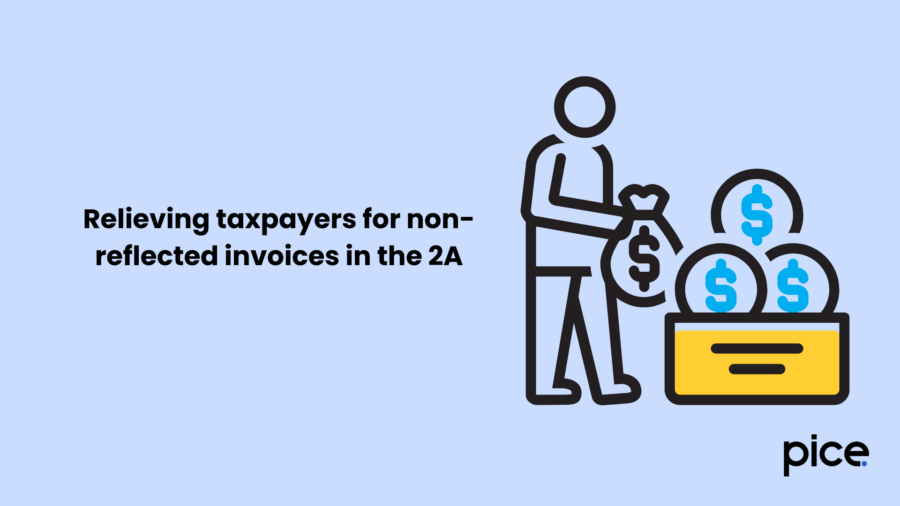
According to Rule 36 (4) of CGST 2017, taxpayers filing GSTR 3B have the authority to claim ITC only until the eligible credit is available in GSTR 2B. So, within this permissible time frame, they can claim an Input Tax Credit.
This CGST rule has negatively impacted buyers. They must wait for their suppliers to upload invoices in GSTR-1 before claiming ITC.
(5) Sending of notice and initiation of further proceedings
Under Section 61 of the CGST act, a designated officer scrutinises returns filed by the taxpayer, verifying corresponding documents and identifying any discrepancies. If such a situation occurs during this period of scrutiny, that officer might ask for an explanation for the discrepancy.
In this scenario, a copy of the letter to the vendor regarding GST mismatches will be helpful. This letter will prove that the taxpayer has noticed the mismatch and has taken the first step towards its resolution.
If a registered person or a legal person does not get a satisfactory explanation from the taxpayer within a specified time frame, it might result in a penalty under Sections 65, 66, or 67. Therefore, proactive compliance measures are always the best.
Sample Letter Regarding GST Mismatch
Here is a template for letter to the vendor regarding GST mismatches. You might get ideas from it in case of future mismatches. These predefined templates help you take prompt action while saving a lot of time and effort.
From
Abhishek Bera
Manager
Instant Foods Pvt. Ltd.
Kolkata
Date: April 14, 2025
To
Mr. Rajesh Agarwal
Manager
Golden Spices Pvt. Ltd
Kolkata
Subject: Mismatch in GST returns filing
Dear Mr. Agarwal,
I am writing to you to bring your attention that we have received a notification from the GST department that states that there has been a GST filing mismatch for the financial year 2023-24. We would really appreciate it if you could check if the same has happened on your end or not.
The mismatch has been reported for Invoice number 54321 dated 19.8.2023 for the amount of Rs. 20,520. There has been a mismatch of Rs. 20 and we believe this occurred due to some kind of typing error.
When we checked the invoice on our end, it was accurate. Could you please check the same on your GST returns file? Then we can take the necessary action to resolve the issue. Do not hesitate to place a call at 9876543210.
Sincerely,
Abhishek Bera
Manager
Instant Foods Pvt. Ltd.
Kolkata
Conclusion
GST filing is rigorous work that takes a lot of time and effort. Even after all that, there are chances to face mismatch. But do not worry; the sooner you take an actionable step without panicking, the sooner the scenario can be handled.
Whenever you get notified by the GST authorities regarding a mismatch in the GST return filing, send a letter to the vendor for a GST mismatch to identify the reason behind the mismatch and move forward, taking the corrective measures from there.
💡If you want to streamline your invoices and make payments via credit or debit card or UPI, consider using the PICE App. Explore the PICE App today and take your business to new heights.
 By
By 






